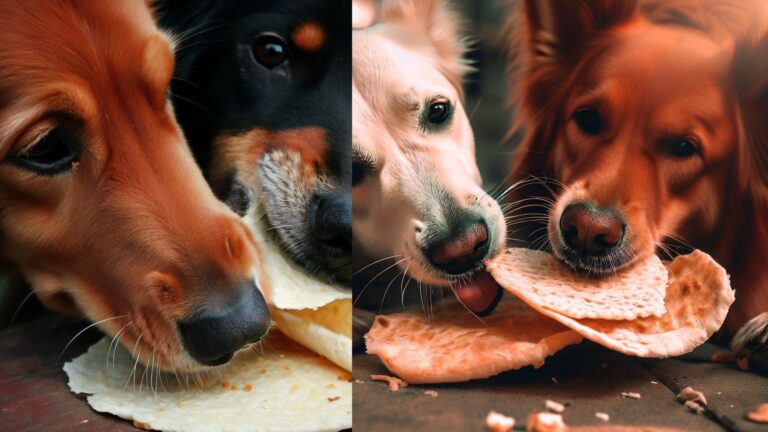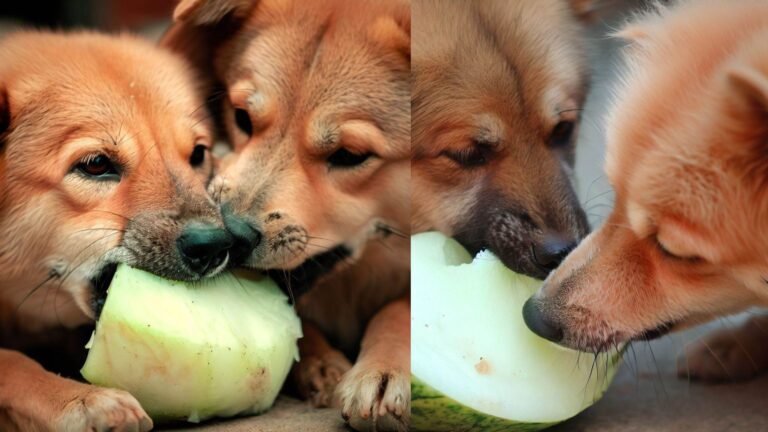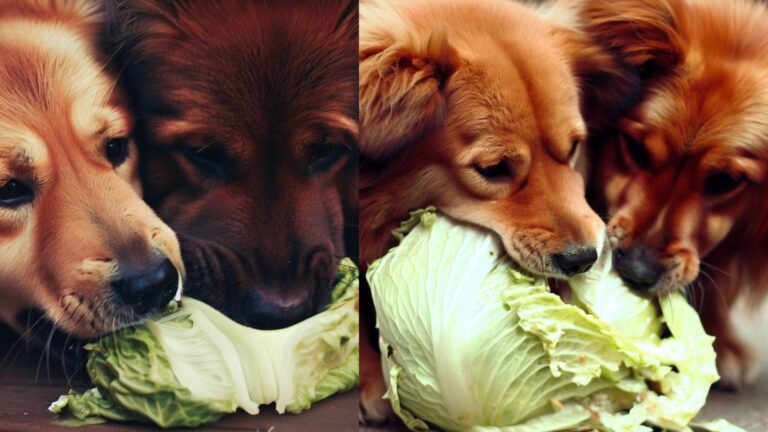Salmon is a healthy and delicious food for both humans and dogs. It is a great source of protein, omega-3 fatty acids, and other essential nutrients that support your dog’s overall health. However, many dog owners are unsure whether it is safe for their pets to consume salmon skin.
In this blog post, we will explore whether dogs can eat salmon skin and discuss its potential benefits and risks.
Table of Contents
Can Dogs Eat Salmon Skin?
The short answer is yes; dogs can eat salmon skin. In fact, salmon skin is rich in omega-3 fatty acids, which are essential for your dog’s skin, coat, and overall health. Omega-3 fatty acids can help reduce inflammation, promote healthy brain function, and support cardiovascular health. Additionally, salmon skin is a good source of protein, which is essential for your dog’s muscle development and growth.

However, there are some risks associated with feeding your dog salmon skin. Salmon skin is high in fat, and consuming too much fat can lead to obesity, pancreatitis, and other health issues.
Additionally, some dogs may have an allergic reaction to salmon skin or experience digestive problems such as vomiting or diarrhea.
Therefore, it is important to feed your dog salmon skin in moderation and monitor their reaction. If you notice any adverse effects after feeding your dog salmon skin, such as vomiting, diarrhea, or itching, stop feeding them salmon skin and consult your veterinarian.
How To Prepare Salmon Skin For Your Dog?
If you decide to feed your dog salmon skin, there are some important things to keep in mind. First, cook the salmon skin thoroughly to kill any potential bacteria or parasites. Raw salmon can contain harmful bacteria that can cause foodborne illnesses in both humans and pets.
To prepare salmon skin for your dog, follow these steps:
- Remove the skin from the salmon fillet using a sharp knife or kitchen shears. Be sure to remove any bones or scales.
- Rinse the salmon skin under cold running water to remove any remaining scales or debris.
- Place the salmon skin in a pot of boiling water and cook for 5-10 minutes or until fully cooked.
- Remove the salmon skin from the water and allow it to cool.
- Cut the salmon skin into small pieces or strips, depending on your dog’s size.
- Feed the salmon skin to your dog as a treat or mix it with their regular food.
Remember to always feed salmon skin to your dog in moderation and monitor their reaction. If your dog shows any signs of an allergic reaction or digestive problems, stop feeding them salmon skin and consult your veterinarian.
Read More: Can Dogs Eat Sausage?
FAQs

Is it safe for dogs to eat salmon skin?
Yes, it is generally safe for dogs to eat salmon skin. However, salmon skin should be fed in moderation and cooked properly to avoid any potential health risks.
What are the benefits of feeding dogs salmon skin?
Salmon skin is a good source of protein and omega-3 fatty acids, which are essential for your dog’s skin, coat, and overall health. Omega-3 fatty acids can help reduce inflammation, promote healthy brain function, and support cardiovascular health.
Can dogs eat raw salmon skin?
No, dogs should not eat raw salmon skin. Raw salmon can contain harmful bacteria that can cause foodborne illnesses in both humans and pets. Salmon skin should always be cooked thoroughly before feeding it to your dog.
Can feed dogs salmon skin cause any health problems?
Feeding your dog too much salmon skin can lead to obesity, pancreatitis, and other health issues. Additionally, some dogs may have an allergic reaction to salmon skin or experience digestive problems such as vomiting or diarrhea.
How should salmon skin be prepared for dogs?
Salmon skin should be cooked thoroughly to kill any potential bacteria or parasites. To prepare salmon skin for your dog, remove the skin from the salmon fillet, rinse it under cold running water, cook it in boiling water for 5-10 minutes, and cut it into small pieces or strips.
Can dogs eat salmon skin bones?
No, dogs should not eat salmon skin bones or any other fish bones. Fish bones can be sharp and can cause injury to your dog’s mouth, throat, or digestive tract.
How much salmon skin can I feed my dog?
Salmon skin should be fed in moderation as it is high in fat. You should only feed your dog small amounts of salmon skin as a treat or mix it with their regular food.
Can puppies eat salmon skin?
Yes, puppies can eat salmon skin. However, it should be fed in moderation and cut into small pieces to avoid choking hazards.
Can dogs with food allergies eat salmon skin?
Dogs with food allergies may have an allergic reaction to salmon skin. If your dog has a history of food allergies, it is best to avoid feeding them salmon skin.
Can dogs with pancreatitis eat salmon skin?
Dogs with pancreatitis should avoid eating high-fat foods such as salmon skin. Feeding your dog salmon skin can worsen its condition and lead to further health issues.
Can dogs eat smoked salmon skin?
Smoked salmon skin should be avoided as it contains high salt and can cause dehydration in dogs. It can also contain added preservatives and flavorings that may not be safe for dogs.
Can dogs eat baked salmon skin?
Yes, baked salmon skin is safe for dogs to eat as long as it is cooked thoroughly and does not contain any added ingredients or seasonings that may be harmful to dogs.
Can dogs eat uncooked salmon skin?
No, dogs should not eat uncooked salmon skin. Raw salmon can contain harmful bacteria and parasites that can cause foodborne illnesses in both humans and pets. Salmon skin should always be cooked thoroughly before feeding it to your dog.
Can dogs eat salmon skin fried?
Fried salmon skin should be avoided as it is high in fat and can lead to obesity and other health issues in dogs. Additionally, the added ingredients and seasonings used in frying may not be safe for dogs.
Conclusion
In conclusion, dogs can eat salmon in moderation as it provides many health benefits. However, it is important to be aware of the risks associated with feeding your dog salmon skin, such as obesity and allergic reactions.
Always prepare salmon skin properly by cooking it thoroughly and monitoring your dog’s reaction. Consult your veterinarian before adding new food to your dog’s diet.







One Comment